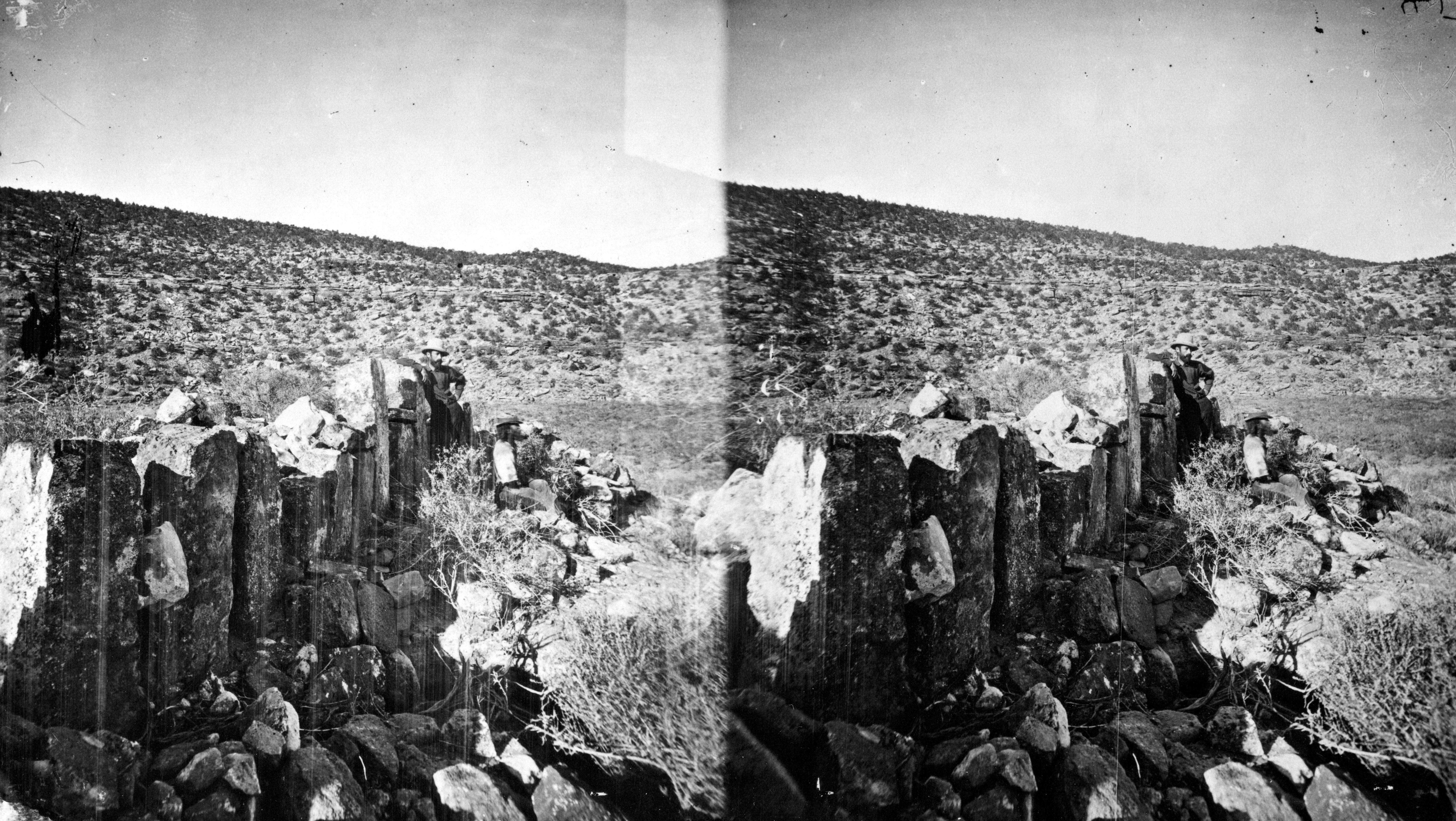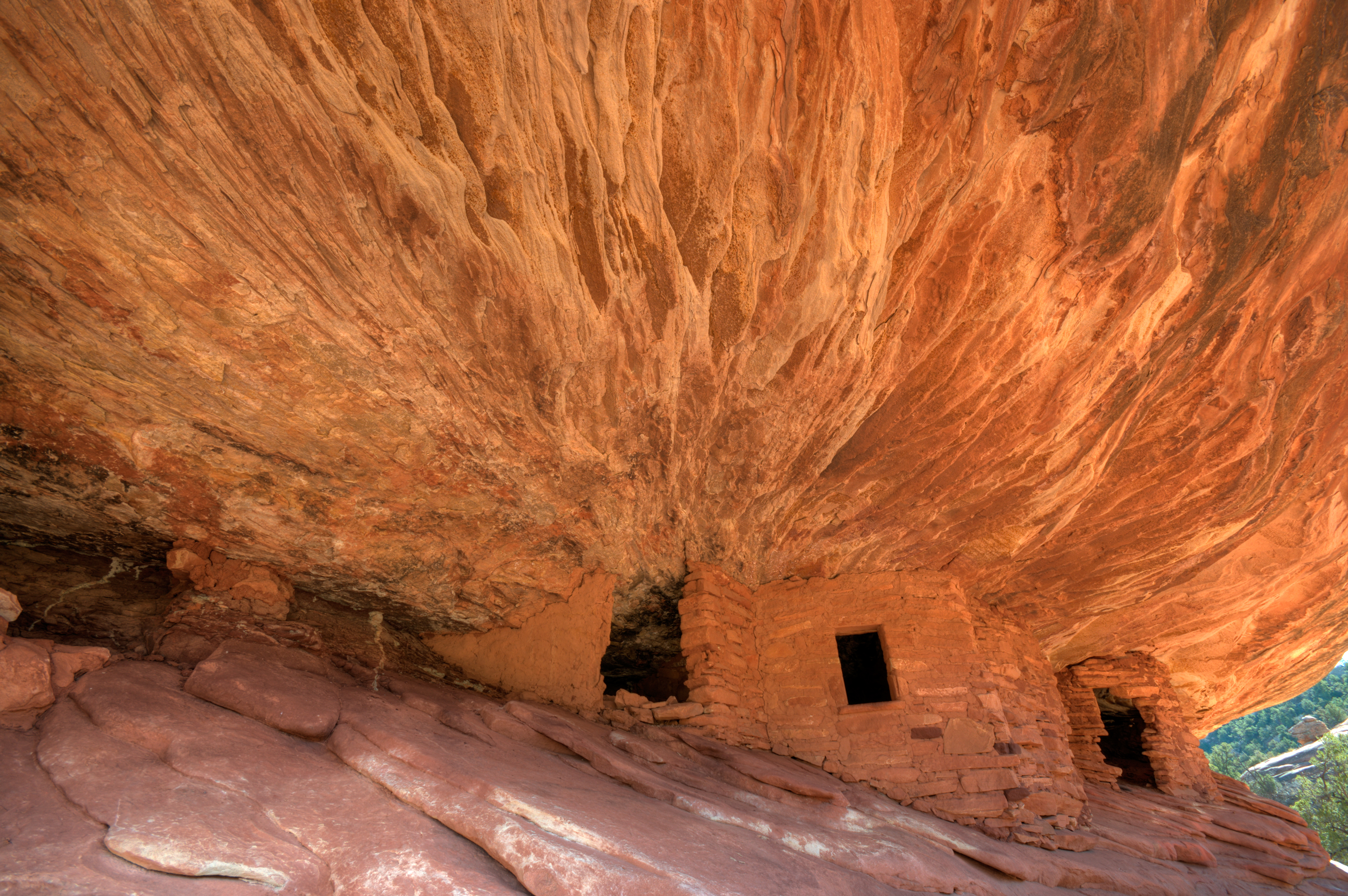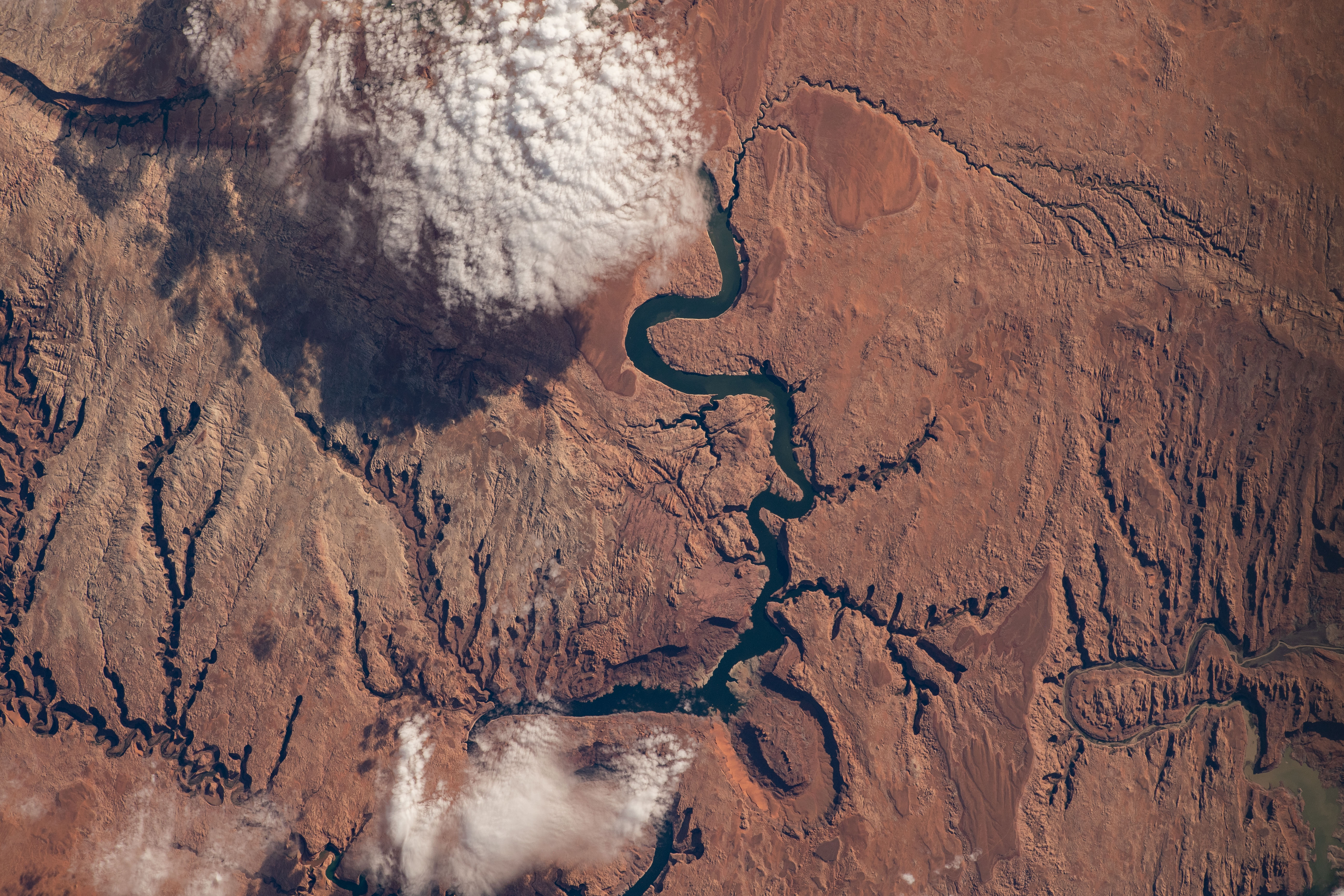San Juan County, UT on:
[Wikipedia]
[Google]
[Amazon]
San Juan County ( ) is a county in the southeastern portion of the U.S. state of Utah. As of the
 San Juan County lies in the southeastern corner of the state of Utah. Its borders coincide with the borders of the states of Colorado, New Mexico, and Arizona with Utah.''San Juan County UT'' Google Maps (accessed March 31, 2019)
San Juan County lies in the southeastern corner of the state of Utah. Its borders coincide with the borders of the states of Colorado, New Mexico, and Arizona with Utah.''San Juan County UT'' Google Maps (accessed March 31, 2019)
/ref> The convergence point of these borders, Four Corners Monument, is located at the extreme southeastern corner of the county. The county's terrain generally slopes to the west and the south, with its highest point, Mount Peale, at above sea level. The county has a total area of , of which is land and (1.4%) is water. It is the largest county by area in Utah. The county's western and southern boundaries lie deep within gorges carved by the Colorado and
 In 2018, the only operating uranium processing plant in the United States was located in the town of Blanding; however, the plant was moved to be on standby in 2019.
San Juan County is home to numerous oil and gas fields, including
In 2018, the only operating uranium processing plant in the United States was located in the town of Blanding; however, the plant was moved to be on standby in 2019.
San Juan County is home to numerous oil and gas fields, including
 * Grand County - north
* Mesa County, Colorado - northeast
* Montrose County, Colorado - northeast
* San Miguel County, Colorado - east
* Dolores County, Colorado - east
*
* Grand County - north
* Mesa County, Colorado - northeast
* Montrose County, Colorado - northeast
* San Miguel County, Colorado - east
* Dolores County, Colorado - east
*
2010 United States Census
The United States census of 2010 was the twenty-third United States national census. National Census Day, the reference day used for the census, was April 1, 2010. The census was taken via mail-in citizen self-reporting, with enumerators servin ...
, the population was 14,746. Its county seat is Monticello, while its most populous city is Blanding. The Utah State Legislature named the county for the San Juan River, itself named by Spanish explorers (in honor of Saint John).
San Juan County borders Arizona, Colorado, and New Mexico at the Four Corners
The Four Corners is a region of the Southwestern United States consisting of the southwestern corner of Colorado, southeastern corner of Utah, northeastern corner of Arizona, and northwestern corner of New Mexico. The Four Corners area ...
.
History
The Utah Territory authorized creation of San Juan County on February 17, 1880, with territories annexed from Iron, Kane, and Piute counties. There has been no change in its boundaries since its creation. Monticello was founded in 1887, and by 1895 it was large enough to be designated the seat of San Juan County.Geography
 San Juan County lies in the southeastern corner of the state of Utah. Its borders coincide with the borders of the states of Colorado, New Mexico, and Arizona with Utah.''San Juan County UT'' Google Maps (accessed March 31, 2019)
San Juan County lies in the southeastern corner of the state of Utah. Its borders coincide with the borders of the states of Colorado, New Mexico, and Arizona with Utah.''San Juan County UT'' Google Maps (accessed March 31, 2019)/ref> The convergence point of these borders, Four Corners Monument, is located at the extreme southeastern corner of the county. The county's terrain generally slopes to the west and the south, with its highest point, Mount Peale, at above sea level. The county has a total area of , of which is land and (1.4%) is water. It is the largest county by area in Utah. The county's western and southern boundaries lie deep within gorges carved by the Colorado and
San Juan San Juan, Spanish for Saint John, may refer to:
Places Argentina
* San Juan Province, Argentina
* San Juan, Argentina, the capital of that province
* San Juan, Salta, a village in Iruya, Salta Province
* San Juan (Buenos Aires Underground), ...
Rivers. Tributary canyons, cutting through rock layers of the surrounding deserts, have carved the land up with chasms, cliffs, and plateaus. In the center of the county are Cedar Mesa, Comb Wash, Natural Bridges
A natural arch, natural bridge, or (less commonly) rock arch is a natural landform where an arch has formed with an opening underneath. Natural arches commonly form where inland cliffs, coastal cliffs, fins or stacks are subject to erosion ...
and Hovenweep National Monuments. Canyonlands National Park
Canyonlands National Park is an American national park located in southeastern Utah near the town of Moab. The park preserves a colorful landscape eroded into numerous canyons, mesas, and buttes by the Colorado River, the Green River, and their r ...
lies mostly within the county borders. The Eastern side of Glen Canyon National Recreation Area / Lake Powell is also in the county.
The Blue (Abajo) Mountains and the La Sal Mountains
The La Sal Mountains or La Sal Range are a mountain range located in Grand and San Juan counties in the U.S. state of Utah, along the border with Colorado. The range rises above and southeast of Moab and north of the town of La Sal. This range ...
exceed in elevation. Both ranges are covered with lush forests, contrasting the scenery below. The elevation change within the county is from nearly in the La Sal Mountains to at Lake Powell, a difference of about .
The county's towns lie primarily on a north-south axis along U.S. routes 191 and 163 from La Sal in the north to Monument Valley
Monument Valley ( nv, Tsé Biiʼ Ndzisgaii, , meaning ''valley of the rocks'') is a region of the Colorado Plateau characterized by a cluster of sandstone buttes, the largest reaching above the valley floor. It is located on the Utah-Arizona s ...
in the south.
Natural resources
 In 2018, the only operating uranium processing plant in the United States was located in the town of Blanding; however, the plant was moved to be on standby in 2019.
San Juan County is home to numerous oil and gas fields, including
In 2018, the only operating uranium processing plant in the United States was located in the town of Blanding; however, the plant was moved to be on standby in 2019.
San Juan County is home to numerous oil and gas fields, including Squaw Canyon Oil Field
Squaw Canyon Oil Field is located in San Juan County, approximately southeast of Blanding, Utah.
Production is from a northwest–southeast trending carbonate buildup in the Pennsyslvanian Desert Creek.
The field is part of the Paradox Basin th ...
, that produce primarily from the Desert Creek and Ismay Formations.
Major highways
* * * * * * * *Adjacent counties
 * Grand County - north
* Mesa County, Colorado - northeast
* Montrose County, Colorado - northeast
* San Miguel County, Colorado - east
* Dolores County, Colorado - east
*
* Grand County - north
* Mesa County, Colorado - northeast
* Montrose County, Colorado - northeast
* San Miguel County, Colorado - east
* Dolores County, Colorado - east
* Montezuma County, Colorado
Montezuma County is a county located in the U.S. state of Colorado. As of the 2020 census, the population was 25,849. The county seat is Cortez.
Mesa Verde National Park, Canyons of the Ancients National Monument, Yucca House National Monu ...
- east
* San Juan County, New Mexico - southeast
* Apache County, Arizona - south
* Navajo County, Arizona - south
* Coconino County, Arizona - southwest
* Kane County - west
* Garfield County - west
* Wayne County - west
* Emery County - northwest
San Juan County is bordered by more counties than any other county in the United States, at 14.
Protected areas
* Bears Ears National Monument *Canyonlands National Park
Canyonlands National Park is an American national park located in southeastern Utah near the town of Moab. The park preserves a colorful landscape eroded into numerous canyons, mesas, and buttes by the Colorado River, the Green River, and their r ...
(part)
* Dark Canyon Primitive Area
* Glen Canyon National Recreation Area (part)
* Grand Gulch Primitive Area
* Hovenweep National Monument (part)
* Manti-La Sal National Forest (part)
* Natural Bridges National Monument
* Rainbow Bridge National Monument
Demographics
2010 Census
As of the2010 United States Census
The United States census of 2010 was the twenty-third United States national census. National Census Day, the reference day used for the census, was April 1, 2010. The census was taken via mail-in citizen self-reporting, with enumerators servin ...
, there were 14,746 people and 4,505 households in San Juan County. The racial and ethnic composition of the population was 50.4% Native American, 45.8% white, 0.3% Asian, 0.2% African American and 2.3% reporting two or more races. 4.4% of the population was Hispanic or Latino of any race.
2000 Census
As of the2000 United States Census
The United States census of 2000, conducted by the Census Bureau, determined the resident population of the United States on April 1, 2000, to be 281,421,906, an increase of 13.2 percent over the 248,709,873 people enumerated during the 1990 ce ...
, there were 14,413 people, 4,089 households, and 3,234 families in the county. The population density was 1.84/sqmi (0.71/km2). There were 5,449 housing units at an average density of 0.70/km2). The racial makeup of the county was 40.77% White, 0.12% Black or African American, 55.69% Native American, 0.17% Asian, 0.03% Pacific Islander, 1.70% from other races, and 1.51% from two or more races. 3.75% of the population were Hispanic or Latino of any race.
In the 4,089 households, 47.00% had children under 18 living with them, 60.40% were married couples
Marriage, also called matrimony or wedlock, is a culturally and often legally recognized union between people called spouses. It establishes rights and obligations between them, as well as between them and their children, and between t ...
living together, 14.10% had a female householder with no husband present, and 20.90% were non-families. 18.70% of all households were made up of individuals, and 6.70% had someone living alone who was 65 years of age or older. The average household size was 3.46, and the average family size was 4.02.
The county population contained 39.30% under 18, 10.00% from 18 to 24, 25.20% from 25 to 44, 17.10% from 45 to 64, and 8.40% who were 65 years of age or older. The median age was 26 years. For every 100 females, there were 99.50 males. For every 100 females aged 18 and over, there were 94.90 males.
The median income for a household in the county was $28,137, and the median income for a family was $31,673. Males had a median income of $31,497 versus $19,617 for females. The per capita income for the county was $10,229. About 26.90% of families and 31.40% of the population were below the poverty line, including 34.70% of those under age 18 and 35.10% of those aged 65 or over.
As of 2017, San Juan County was the poorest county (per capita) in the state and one of the poorest in the United States.
Politics and Government
San Juan County has supported Republican presidents since voting for Wendell Willkie in1940
A calendar from 1940 according to the Gregorian calendar, factoring in the dates of Easter and related holidays, cannot be used again until the year 5280.
Events
Below, the events of World War II have the "WWII" prefix.
January
*January ...
. It supported a Democrat for president in 1896 ( William Jennings Bryan), 1916 ( Woodrow Wilson), and 1936
Events
January–February
* January 20 – George V of the United Kingdom and the British Dominions and Emperor of India, dies at his Sandringham Estate. The Prince of Wales succeeds to the throne of the United Kingdom as King E ...
( Franklin D. Roosevelt). Though a Republican vote currently secures elections, the area has voted less Republican than the rest of Utah in many national elections. In 2004, for example, George W. Bush won 60.02% in San Juan County versus 71.54% in the state. In 2020, Democrat Joe Biden needed 6.13% more votes to win the county from Donald Trump, who secured 51.2% in the county as opposed to 58.13% in the state as a whole. The county is more competitive at the state level due to its high Native American population, which leans Democratic. Notably, the county voted for the Democratic candidates in the 1988
File:1988 Events Collage.png, From left, clockwise: The oil platform Piper Alpha explodes and collapses in the North Sea, killing 165 workers; The USS Vincennes (CG-49) mistakenly shoots down Iran Air Flight 655; Australia celebrates its Australian ...
and 2000
File:2000 Events Collage.png, From left, clockwise: Protests against Bush v. Gore after the 2000 United States presidential election; Heads of state meet for the Millennium Summit; The International Space Station in its infant form as seen from ...
gubernatorial elections, both of which Republican candidates won.
Federally mandated commissioner districts put many Navajo
The Navajo (; British English: Navaho; nv, Diné or ') are a Native American people of the Southwestern United States.
With more than 399,494 enrolled tribal members , the Navajo Nation is the largest federally recognized tribe in the United ...
voters in one district. The San Juan County Board of Commissioners has been majority white for many years. In 2016, a Federal District Court decision found voting districts violated the 1965 Voting Rights Act and the U.S. Constitution. Before the 2016 court decision, the county used an at-large voting system to elect commissioners.
In 2018, the first-ever majority-Navajo commission was seated. Two of the three county commissioners, Willie Grayeyes and Kenneth Maryboy, are board members of Utah Diné Bikeyah, which supported the creation of Bears Ears National Monument. In a 2019 special election, Proposition 10, which would have changed the structure of the county government to include five county commissioners, was blocked needing 153 more populous votes. The proposition, spearheaded by Blanding Mayor Joe Lyman, was characterized by opponents as an effort to undermine the Navajo-majority county commission. Mayor Joe Lyman characterized the proposition as a way to restore representation to Blanding, the county's largest city. He states, "I don't like how we arrived at the commissioners we have because it felt like a judicial appointment," and that "the vote is very evenly split."
As of March 2020, efforts were underway to bring municipal water and electrical service to the 29-home Diné (Navajo
The Navajo (; British English: Navaho; nv, Diné or ') are a Native American people of the Southwestern United States.
With more than 399,494 enrolled tribal members , the Navajo Nation is the largest federally recognized tribe in the United ...
) community of Westwater, which has existed for decades with neither just outside the city limits of Blanding.
Communities
Cities
* Blanding * Monticello (county seat)Towns
* BluffCensus-designated places
* Aneth * Halchita * Halls Crossing * La Sal * Mexican Hat * Montezuma Creek * Navajo Mountain * Oljato-Monument Valley * Spanish Valley * Tselakai Dezza * White MesaUnincorporated communities
*Eastland
SS ''Eastland'' was a passenger ship based in Chicago and used for tours. On 24 July 1915, the ship rolled over onto its side while tied to a dock in the Chicago River. In total, 844 passengers and crew were killed in what was the largest loss ...
* Ucolo
See also
* List of counties in Utah * National Register of Historic Places listings in San Juan County, UtahReferences
External links
* * {{Authority control 1880 establishments in Utah Territory Populated places established in 1880